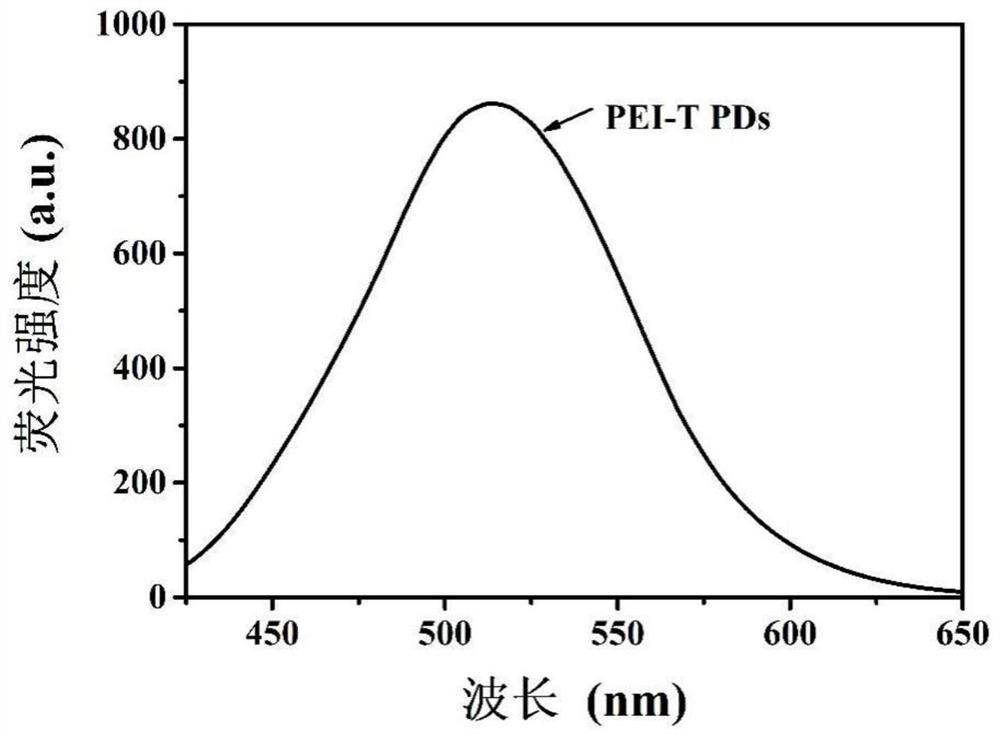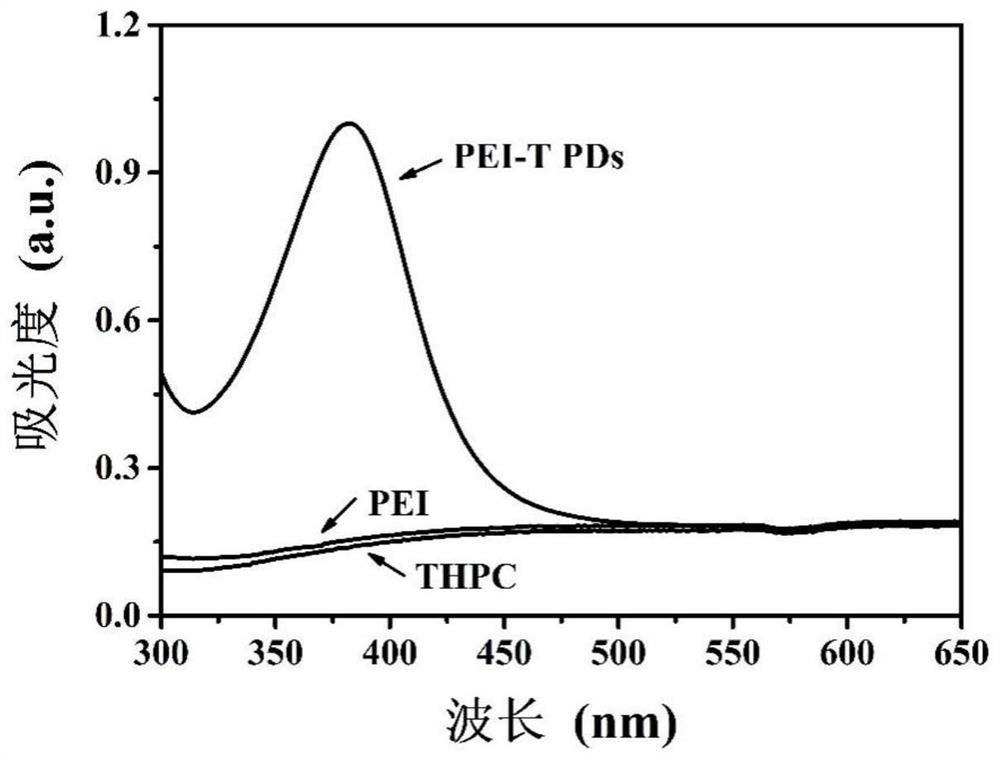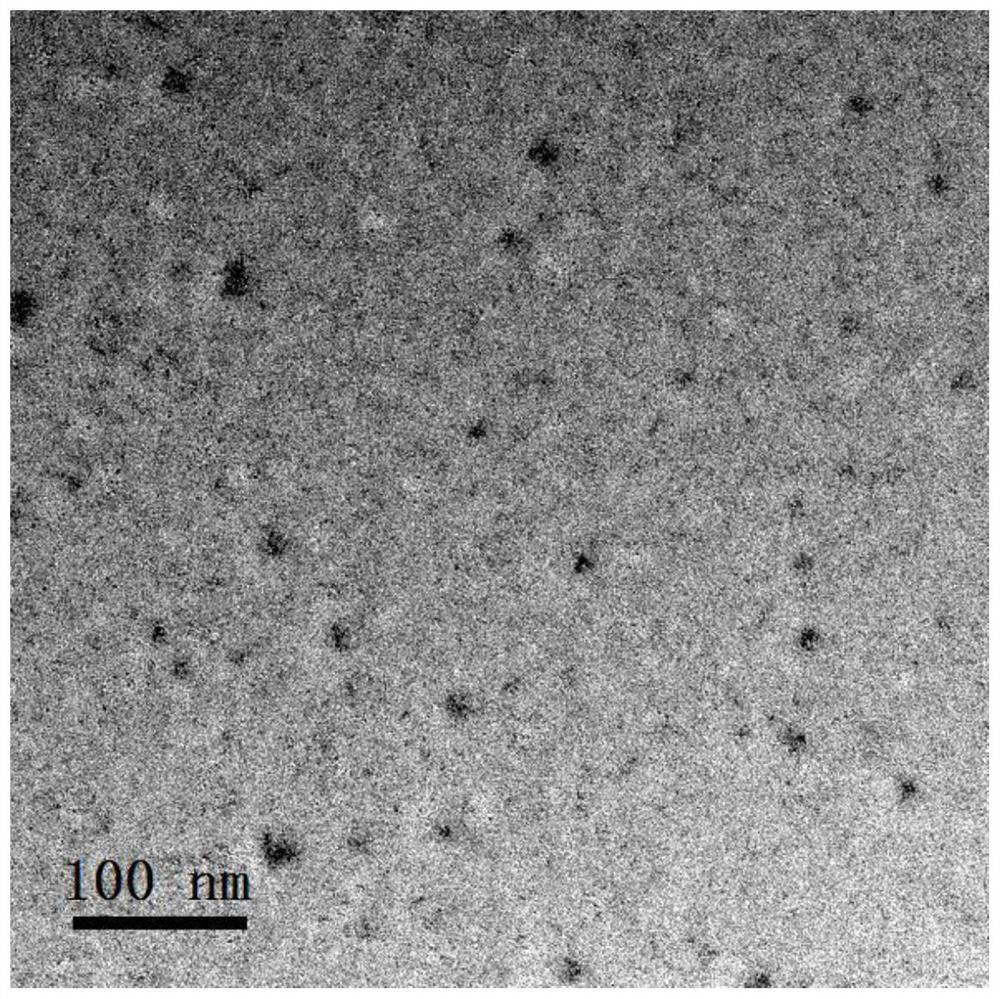Method for rapidly preparing polyethyleneimine-tetrakis(hydroxymethyl)phosphonium chloride non-conjugated fluorescent polymer point at room temperature
A technology of tetrakis hydroxymethyl phosphorus chloride and polyethyleneimine, which is applied in the field of fluorescent polymer materials, can solve the problems of poor water solubility, toxic side effects, and low biocompatibility, and achieve rapid response, high stability, and step-by-step simple effect
- Summary
- Abstract
- Description
- Claims
- Application Information
AI Technical Summary
Problems solved by technology
Method used
Image
Examples
Embodiment 1~5
[0023] A method for quickly preparing polyethyleneimine-tetrahydroxymethylphosphonium chloride non-conjugated fluorescent polymer dots at room temperature, said method comprising the steps of:
[0024] (1) At room temperature, using water as the reaction solvent, prepare a solution of polyethyleneimine with a concentration of 5 mM.
[0025] (2) Mix the polyethyleneimine solution prepared in step (1) with the tetrakis hydroxymethyl phosphorus chloride solution, and react at 0-80° C. for 90 minutes to obtain a product solution;
[0026] (3) The product solution was dialyzed to prepare non-conjugated fluorescent polymer dots (PEI-T PDs).
[0027] Examples 1-5 are PEI-T PDs prepared at different temperatures from polyethyleneimine and tetrakishydroxymethylphosphonium chloride, as shown in Table 1.
[0028] Polyethyleneimine is a water-soluble polymer containing primary amines, secondary amines and tertiary amines. PEI contains nitrogen atoms, which are easy to form hydrogen bonds...
Embodiment 6~11
[0033] A method for quickly preparing polyethyleneimine-tetrahydroxymethylphosphonium chloride non-conjugated fluorescent polymer dots at room temperature, said method comprising the steps of:
[0034] (1) At room temperature, using water as the reaction solvent, prepare a solution of polyethyleneimine with a concentration of 5 mM.
[0035] (2) Mix the polyethyleneimine solution prepared in step (1) with the tetrakis hydroxymethyl phosphorus chloride solution, and react at 25° C. for 10 to 150 minutes to obtain a product solution;
[0036] (3) The product solution was dialyzed to prepare non-conjugated fluorescent polymer dots (PEI-T PDs).
[0037] Examples 6-11 are PEI-T PDs prepared under different reaction times, see Table 2.
[0038] Table 2 embodiment 6~11 different reaction time
[0039] Example 6 Example 7 Example 8 Example 9 Example 10 Example 11 time (min) 10 30 60 90 120 150
Embodiment 11~13
[0041] A method for quickly preparing polyethyleneimine-tetrahydroxymethylphosphonium chloride non-conjugated fluorescent polymer dots at room temperature, said method comprising the steps of:
[0042] (1) At room temperature, use water as the reaction solvent to prepare a polyethyleneimine solution with a concentration of 2-8 mM.
[0043] (2) Mix the polyethyleneimine solution prepared in step (1) with the tetrakis hydroxymethyl phosphorus chloride solution, and react at 25° C. for 90 minutes to obtain a product solution;
[0044] (3) The product solution was dialyzed to prepare non-conjugated fluorescent polymer dots (PEI-T PDs). Examples 11-13 are PEI-T PDs prepared under different PEI concentrations, see Table 3
[0045] Table 3 Examples 11-13 different PEI concentrations
[0046]
PUM
 Login to View More
Login to View More Abstract
Description
Claims
Application Information
 Login to View More
Login to View More - R&D Engineer
- R&D Manager
- IP Professional
- Industry Leading Data Capabilities
- Powerful AI technology
- Patent DNA Extraction
Browse by: Latest US Patents, China's latest patents, Technical Efficacy Thesaurus, Application Domain, Technology Topic, Popular Technical Reports.
© 2024 PatSnap. All rights reserved.Legal|Privacy policy|Modern Slavery Act Transparency Statement|Sitemap|About US| Contact US: help@patsnap.com










